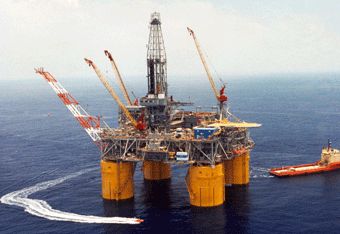

Two mathematical models were developed based on data from a real ship (photo: Wikimedia Commons)
Using a mathematical model, researchers at the Research Center for Greenhouse Gas Innovation demonstrated a potential reduction of more than 15% in polluting gases.
Using a mathematical model, researchers at the Research Center for Greenhouse Gas Innovation demonstrated a potential reduction of more than 15% in polluting gases.

Two mathematical models were developed based on data from a real ship (photo: Wikimedia Commons)
Agência FAPESP* – A study conducted at the Research Center for Greenhouse Gas Innovation (RCGI) shows a potential reduction of more than 15% in pollutant emissions from diesel-electric powered oil platform support vessels (PSVs).
The RCGI is an Engineering Research Center (ERC) created by FAPESP and Shell at the Engineering School of the University of São Paulo (POLI-USP), and currently supported by several companies.
The result was obtained using mathematical models that simulate the operation of the ship’s propulsion system (the set of engines and parts that transmit the power generated to the submerged shafts and propellers) and the emissions generated. The models also made it possible to optimize the use of on-board diesel generators to make more efficient use of fuel and to manage the use of lithium-ion batteries.
PSVs are common vessels in the oil and gas industry, used to transport supplies from ports to platforms. In the diesel-electric model, they run on a set of generators that burn diesel oil to produce the electrical energy needed to move the vessel.
Two mathematical models of the propulsion system of a diesel-electric PSV were developed using data from a real vessel. One used HOMER Pro software to estimate the entire known course of the voyage, and the other used MATLAB software to monitor and control the propulsion system under future conditions and maneuvers.
The results obtained from the simulations were validated with data from voyages made by a real vessel, which became the main differential of the research. The study has been published in the scientific journal Applied Energy.
“The generator models give commands on when to start, reduce or increase the power depending on the conditions of the voyage. The models with batteries turn them on or off based on these factors and the amount of charge. We also analyzed which size battery should be installed, since each ship needs a specific size to get the best results,” explains Bruno Souza Carmo, professor at POLI-USP, director of the RCGI Decarbonization Program and coordinator of the research.
The previous data on the vessels and the validation of the generator model were carried out in partnership with a company in the naval sector, which shared telemetry data for five months and collected various pieces of information from the vessels in real-time, such as the levels of gas emissions into the atmosphere.
Significant reduction in emissions
“In the study, we found that the emissions recorded in the field were the same as those calculated by our model, which validated the algorithm for use in generators. The battery models were validated using data from the literature because the ships we monitored were not yet using this equipment, which is new to the market,” says the project coordinator. “By optimizing the generators alone, we were able to reduce emissions by 10%. By adding batteries to the model, we were able to reduce emissions by another 5%,” he adds.
These results are the sum of the reductions in three pollutants that make up the vessels’ emissions. Carbon dioxide (CO2) was the gas with the greatest reduction. Its levels fell by between 16% and 26%, depending on the generator load used and the configuration applied, since several voyages were analyzed. There was also a significant reduction in the emission of particulate matter, which is a mixture of various solid or liquid pollutants emitted into the atmosphere. The reduction ranged from 25% to 65%.
In the case of nitrogen oxides (NOx), however, emissions increased by as much as 20% in some tests, while they decreased by as much as 6% in others. “Unfortunately, this happens because, in order to optimize the energy efficiency of the generators, we increase the combustion temperature, which favors the formation of this gas. However, it’s possible to correct this problem with catalytic converters, a solution already used in the automobile industry, which suffers from the same problem,” explains Carmo.
According to the POLI-USP professor, the application of the technologies developed by his group is viable for the shipbuilding industry because it does not require a large investment: “There are companies that already sell systems and batteries for this purpose. It wouldn’t cost too much. The main cost would be the interruption of the ship’s operation to carry out the adaptations and safety tests, which isn’t common practice in the industry, as it has been operating with the same ships, unchanged, for many years.”
The article “Assessing the impact of power dispatch optimization and energy storage systems in diesel-electric PSVs: A case study based on real field data” can be read at: www.sciencedirect.com/science/article/abs/pii/S0306261923018408.
* With information from the RCGI.
Republish
The Agency FAPESP licenses news via Creative Commons (CC-BY-NC-ND) so that they can be republished free of charge and in a simple way by other digital or printed vehicles. Agência FAPESP must be credited as the source of the content being republished and the name of the reporter (if any) must be attributed. Using the HMTL button below allows compliance with these rules, detailed in Digital Republishing Policy FAPESP.





